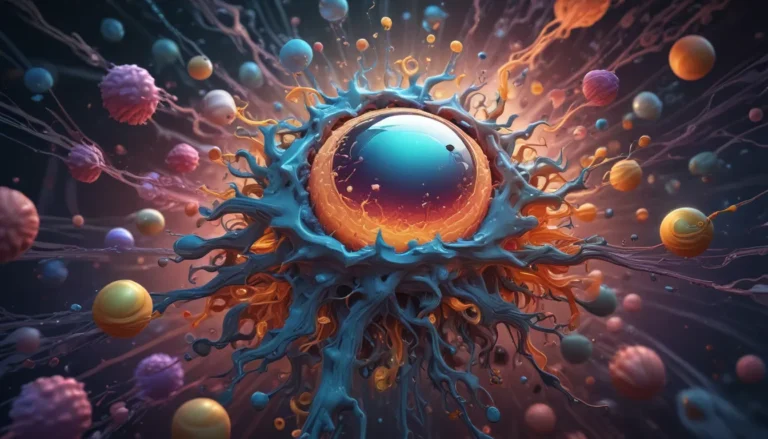A Note About Images: The images used in our articles are for illustration purposes only and may not exactly match the content. They are meant to engage readers, but the text should be relied upon for accurate information.
Homologous recombination is a captivating biological process that holds the key to DNA repair, genetic diversity, and evolutionary advancements. From its pivotal role in cancer prevention to its impact on targeted gene editing, this intricate mechanism shapes the fundamental aspects of genetics. Join us on an enlightening journey as we delve into nine astonishing facts about homologous recombination, unraveling its complexity and significance in the world of biology.
Unveiling the Power of Homologous Recombination
Homologous recombination acts as a DNA superhero, meticulously fixing breaks and ensuring genetic diversity for evolutionary progress. It serves as a genetic puzzle solver, ensuring the right pieces come together for healthy cell division and chromosome stability. This process is akin to a genetic dance that orchestrates the harmonious exchange of genetic information, laying the foundation for the diversity of life forms.
Repairing DNA Damage with Precision
Homologous recombination emerges as a crucial player in the intricate process of DNA repair within the cell. When DNA strands break, it steps in to accurately restore the original DNA sequence, safeguarding genomic stability and ensuring the flawless functioning of genetic material.
Embracing Genetic Exchange through Recombination
Through homologous recombination, a fascinating genetic exchange takes place between similar DNA molecules, such as sister chromatids. This exchange not only maintains genetic diversity but also contributes significantly to the evolution of species, fueling the continuous transformation and adaptation within the biological realm.
Embarking on a Genetic Adventure: Crossing Over in Meiosis
During the enchanting process of meiosis, homologous recombination emerges as a key player in the exchange of genetic material between homologous chromosomes. This crossover event sparks a delightful shuffling of genetic information, fostering genetic diversity among offspring and paving the way for evolutionary marvels.
Unveiling Recombination Hotspots: Nurturing Genetic Variation
Recombination hotspots within the genome serve as vibrant regions where homologous recombination occurs more frequently. These hotspots play a crucial role in enhancing genetic variation and nurturing the formation of novel gene combinations, adding a touch of creativity to the genetic tapestry.
Repairing the Unthinkable: Double Strand Breaks
In the face of double strand breaks in DNA, homologous recombination emerges as a reliable repair mechanism, utilizing the intact sister chromatid as a template for DNA synthesis. This meticulous repair process ensures the precise restoration of damaged DNA, safeguarding genomic integrity and stability.
Harnessing the Power of Targeted Gene Editing
Homologous recombination emerges as a foundational tool in the realm of targeted gene editing techniques, such as CRISPR-Cas. By leveraging this process, scientists can introduce specific DNA alterations, paving the way for groundbreaking studies on gene functions and the development of potential treatments for genetic diseases.
Embracing Harmony: Homologous Chromosome Pairing
During pivotal cellular processes like meiosis, homologous recombination serves as a guiding light, facilitating the pairing and alignment of homologous chromosomes. This harmonious alignment ensures the seamless segregation of genetic material, reducing the likelihood of errors during crucial cell division processes.
Nurturing Chromosomal Integrity through Telomere Maintenance
Homologous recombination extends its nurturing touch to the maintenance of telomeres, the protective caps located at the ends of chromosomes. This role in preserving telomere length and stability contributes to chromosomal integrity and overall genomic stability, safeguarding the blueprint of life.
Unraveling the Enigma: DNA Repair in Cancer Cells
In the realm of cancer cells, defects in DNA repair mechanisms, including homologous recombination, often rear their heads. By delving deep into the molecular intricacies of homologous recombination, scientists can pave the way for the development of targeted therapies that selectively target cancer cells while sparing normal, healthy cells.
Exploring the Intricacies of Homologous Recombination
Homologous recombination emerges as a captivating biological phenomenon that not only repairs DNA damage but also fuels genetic diversity and evolutionary progress. Its ability to exchange genetic information with precision ensures the integrity of the genome and unlocks exciting possibilities in the realms of gene therapy, targeted mutagenesis, and genetic manipulation for various applications.
Unveiling the Mysteries of Homologous Recombination: A Bright Future Ahead
The enchanting facts surrounding homologous recombination offer a mere glimpse into the profound mysteries of genetics. As DNA repair mechanisms diligently uphold genome integrity and genetic recombination dances with chromosomes, the essence of life unfolds before our eyes. Meiosis, a mesmerizing interplay of chromosomes, ensures the vitality of genetic diversity generation after generation. The exploration of these enigmatic processes holds the key to deciphering the building blocks of life and unlocking the potential for groundbreaking medical breakthroughs.
Journey with Us: Delve Deeper into Genetic Marvels
Unlock the captivating world of genetics and immerse yourself in mind-blowing articles that illuminate the nuances of DNA repair, genetic recombination, and meiosis. Our commitment to delivering engaging, trustworthy content ensures that each fact is a treasure trove of diverse insights and credible information. Trust in our dedication to quality and authenticity as you embark on a journey of exploration and learning with us.
By celebrating the wonders of homologous recombination, we celebrate the intricate dance of DNA molecules that underpins the essence of life itself. Join us in unveiling the marvels of genetics, one astonishing fact at a time!






